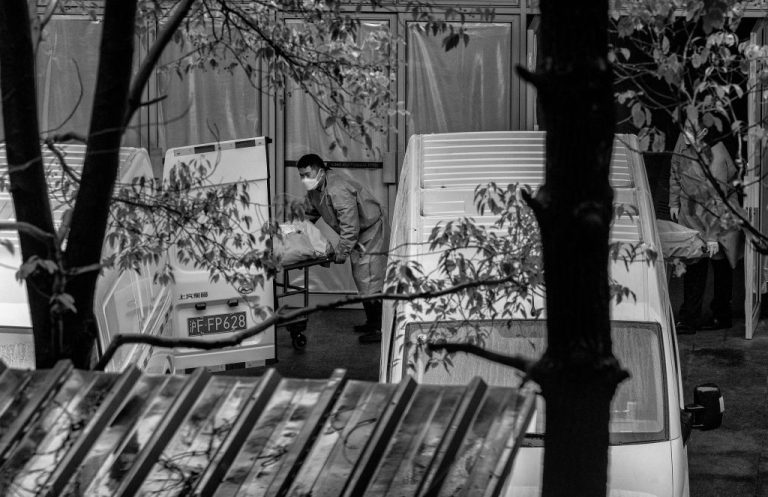The Chinese Communist Party (CCP) has begun hiding cremation data from official quarterly reports.
The change in policy, which came into effect for Q4 2022 reports released on June 9, is the first of its kind since reporting on cremation statistics began in 2007, South China Morning Post reported in a June 15 article.
SCMP added that the Party’s six month lag time between Q4 2022 and June 2023 is a “longer-than-average delay” and that Provincial-level branches of the government likewise have failed to report cremation data.
READ MORE
- China Staggers Under Huge Pandemic Losses
- Is the US Gearing Up for a War With Pandemic-weakened China?
- Qualcomm Says Smartphone Demand Collapsing at ‘Magnitude Greater’ Than Forecasted
The outlet also said that Chongqing’s government announced, also on June 9, that it would “suspend the release of civil affairs data indefinitely following an instruction from the Ministry of Civil Affairs,” SCMP wrote.
Whatever the official rationale for the change is proclaimed to be, the Post points out a key effect of the measure: “The omission of cremation numbers has made it more difficult for the public to understand the scale of deaths from China’s winter Covid-19 wave.”
Success
You are now signed up for our newsletter
Success
Check your email to complete sign up
Timing is somewhat suspicious in light of late-May chatter in official CCP media outlets located in Guangdong, who quoted Zhong Nanshan, National Clinical Research Center for Respiratory Disease Director, as stating that XBB was running amok in China and was expected to cause more than 60 million new cases weekly by the time it peaked in June.
XBB is one of the latest variants or mutations of the Omicron version of SARS-CoV-2, the virus attributed to causing Coronavirus Disease 2019 (COVID-19).
However, the CCP has all but completely stopped reporting COVID-19 case positives and deaths since the end of January, which has created a blank spot in the World Health Organization’s COVID-19 Dashboard and data aggregators that sources from it, such as Our World in Data.
On Christmas Day of 2022, SCMP reported that the National Health Commission had openly said in a statement, “From now on, [we] will not release the daily pandemic information.”
The statement came amid a final data upload to the WHO’s Dashboard from the Chinese government, which saw official case count rise from less than 10 million on Dec. 7 to some 98 million by the end of January.
Confirmed deaths show a similar pattern, rising from roughly 31,000 on Dec. 7 to almost 114,000 by the end of January.
The official tally of both positive cases and confirmed deaths has stayed almost totally flat since.
However, the Party’s declared figures paint a spuriously unaffected situation when compared to the United States, which as of time of writing has suffered more than 1.13 million deaths and 103.44 million positive cases since the pandemic began, despite hosting less than a quarter of the population.
SCMP commented on the central government’s policy change that the NHC “did not give any reason for the change nor the likely frequency of future data release by the CDC, a public health agency under the commission.”
Authors noted the shift in policy was dramatic, “The NHC had released daily figures on Covid-19 infections since January 21, 2020 – during China’s first coronavirus outbreak in the central city of Wuhan.”
“The daily releases had served as authoritative references to the scale of outbreaks under China’s erstwhile strict zero-Covid policy – with details on infections, whether confirmed and asymptomatic, domestic and imported – and the death toll,” SCMP continued.
Also in January, media and social media reports from nearby South Korea complained that the country, specifically capital city Seoul, was suffering from extremely poor air quality and low visibility as the country was rocked by “ultrafine dust” that some speculated was caused by the re-opening of the mainland’s industrial sector.
The phenomenon occurred just weeks after media chatter from outlets such as Reuters noted that long queues of herses had been spotted at Beijing crematoriums, despite the fact that the CCP was reporting there were no deaths caused by an outbreak that saw overseas Chinese nationals scooping up over the counter medicines in nearby countries such as Japan to ship back home.
Photos of South Korea’s skylines during the air quality crisis differed in severity from those taken as a result of the recent Canadian wildfires only in terms of the color of the smoke produced.
Canada’s smoke and the smoke that blanketed New York City after traveling from Ontario was, at its peak, an orange-yellow tint, while South Korea’s ultrafine dust appeared notably gray in photographs.
The theory of a significant wave of pandemic deaths in the mainland at the time has scientific backing.
In December, when Xi Jinping and his administration were on the verge of dropping the “zero-COVID” social credit scheme, Bloomberg reported that a preprint study posted to the Medrxiv server by University of Hong Kong researchers, including the school’s former Dean of Medicine, had used predictive modeling to forecast an additional million deaths would hit mainland China.
SCMP quipped in its article on the change to cremation data that in February, “Beijing called the country’s successful exit from the zero-Covid policy a ‘miracle’ and hailed its ‘decisive victory’ over the pandemic.”














